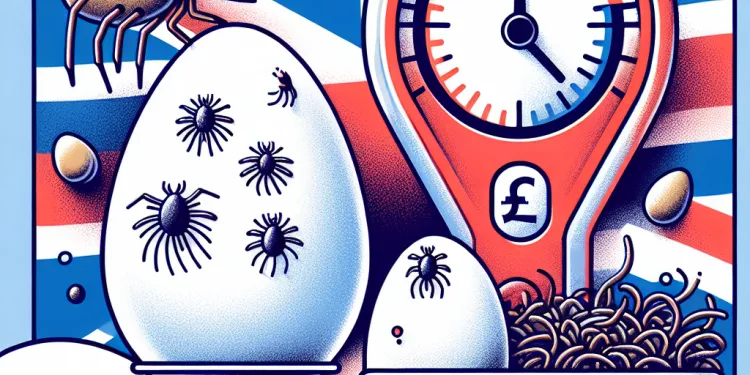
Find Help
More Items From Ergsy search
-

Can nits hatch into lice?
Relevance: 100%
-
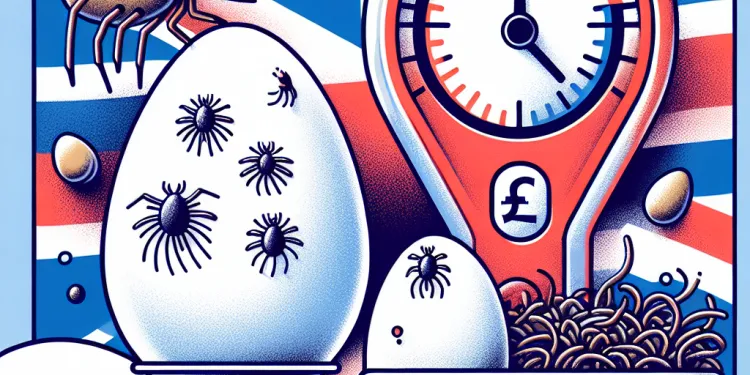
How long does it take for nits to hatch?
Relevance: 93%
-

Do nits live off the scalp?
Relevance: 71%
-
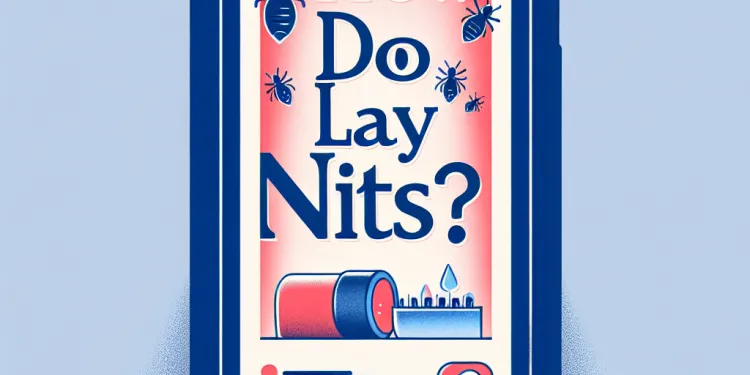
How do lice lay nits?
Relevance: 66%
-

Are nits and head-lice the same thing?
Relevance: 66%
-

Are nits contagious?
Relevance: 66%
-

Where can nits be found?
Relevance: 65%
-
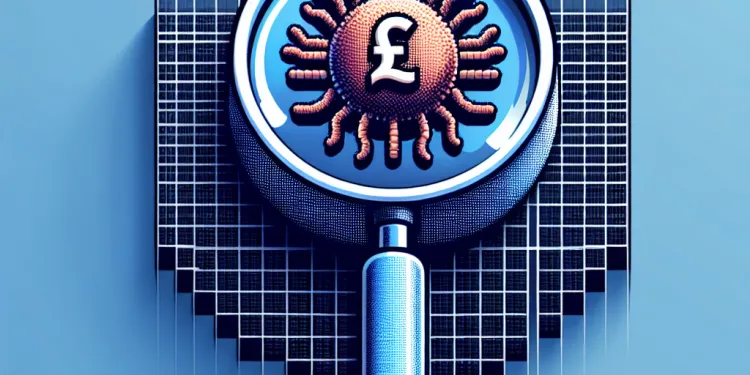
What do nits look like?
Relevance: 64%
-

Can nits survive on furniture or clothing?
Relevance: 63%
-
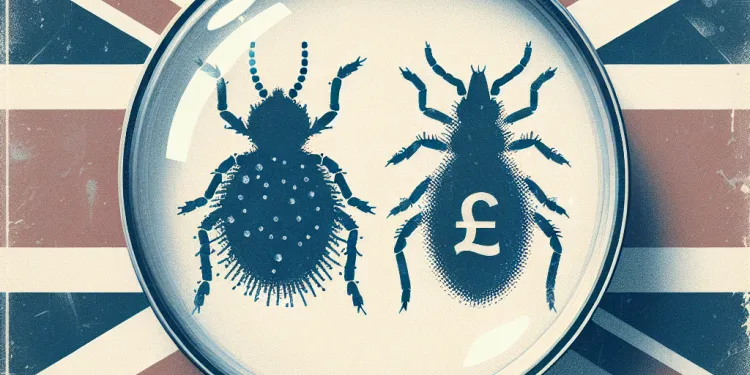
Are nits and head lice the same thing?
Relevance: 58%
-
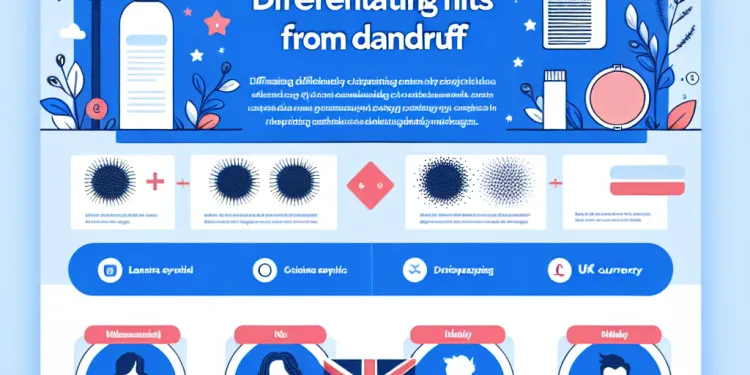
How can you differentiate nits from dandruff?
Relevance: 55%
-
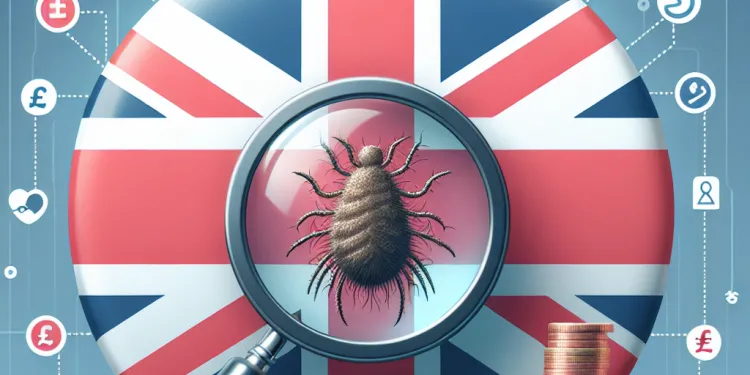
Can you get rid of nits and lice with the same treatments?
Relevance: 36%
-
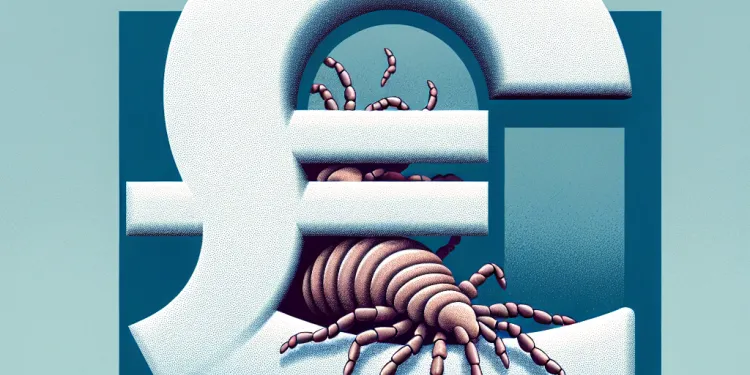
What are head lice?
Relevance: 29%
-
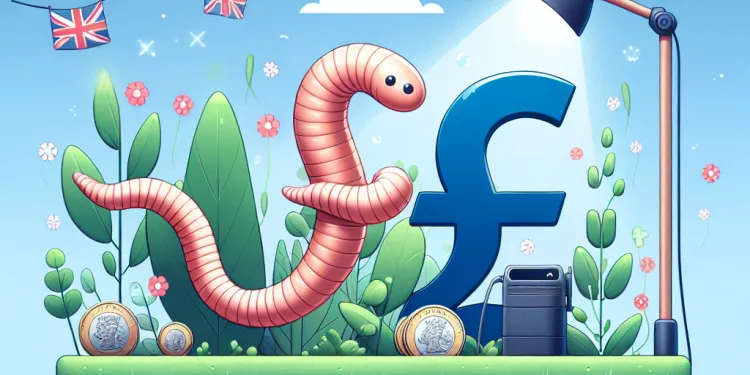
How do screw worms reproduce?
Relevance: 16%
-
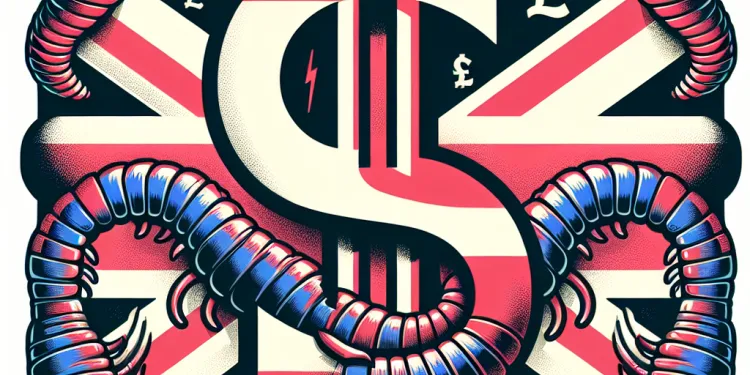
What are Screw Worms parasites?
Relevance: 11%
-

How do screw worms infest their hosts?
Relevance: 10%
-

Are screw worms dangerous to humans?
Relevance: 10%
-

Are there any electric vehicles from MINI available in the UK?
Relevance: 9%
-
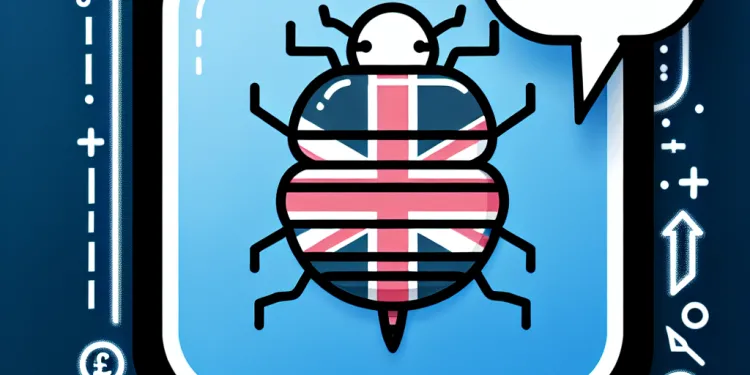
Can screw worm infestations be prevented?
Relevance: 9%
-
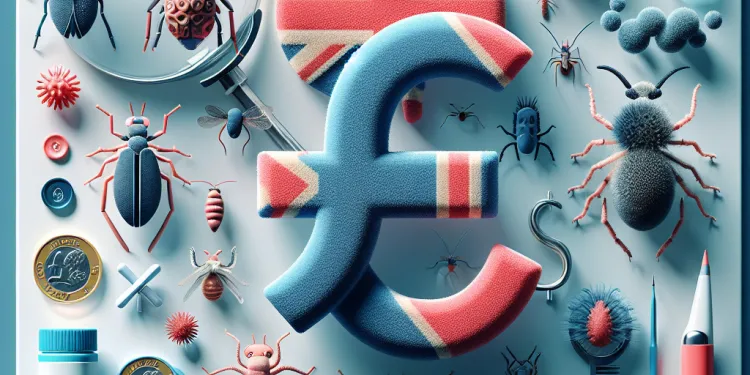
Are there different types of lice?
Relevance: 7%
-
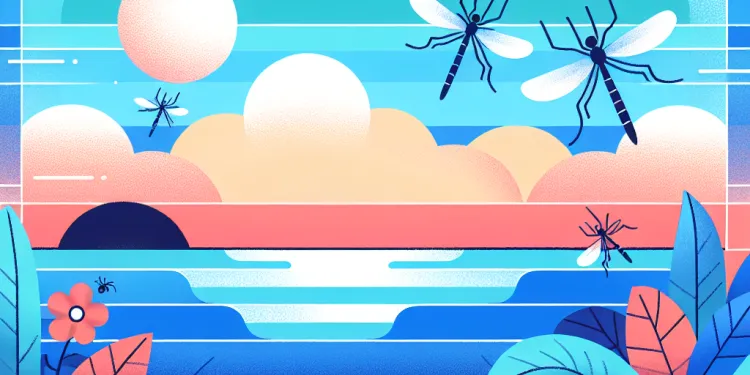
Are climate changes affecting mosquito populations in the UK?
Relevance: 7%
-

What is the role of the embryologist in IVF?
Relevance: 7%
-
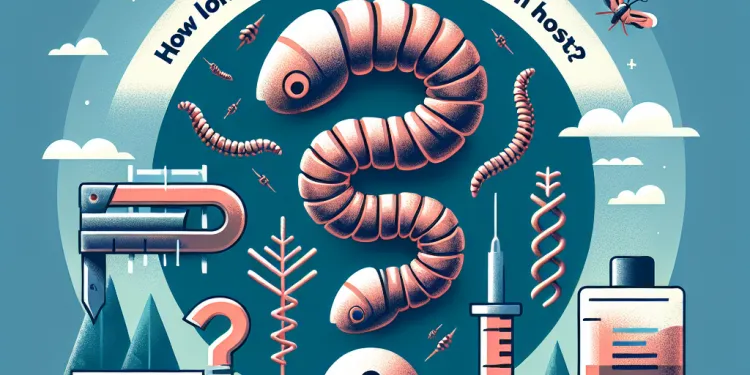
How long do screw worm larvae typically infest a host?
Relevance: 6%
-

What animals can be affected by screw worms?
Relevance: 6%
-

What are the symptoms of a screw worm infestation?
Relevance: 6%
-

What impact do screw worms have on livestock?
Relevance: 6%
-

Are there any natural predators of screw worms?
Relevance: 6%
-
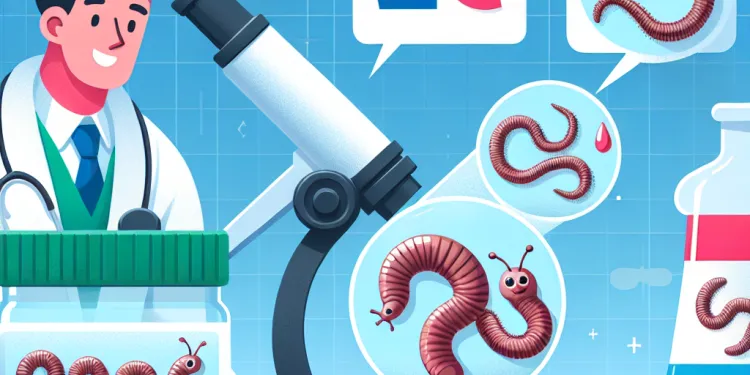
Can screw worms cause zoonotic disease?
Relevance: 6%
-

How are screw worm infestations treated?
Relevance: 6%
-

What species of flies produce screw worms?
Relevance: 3%
-
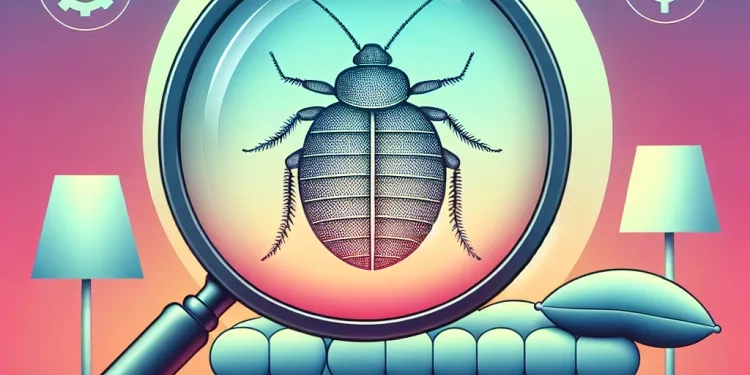
What are bed bugs?
Relevance: 3%
-
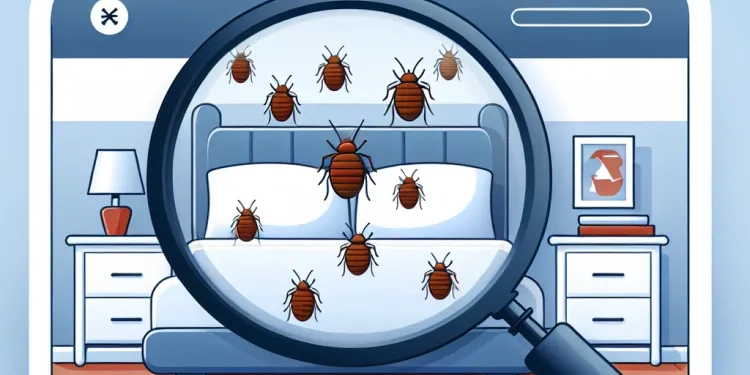
What are the signs of a bed bug infestation?
Relevance: 2%
Understanding Nits and Their Lifecycle
Nits are the eggs laid by head lice, a common issue particularly among school-aged children. Understanding their lifecycle is crucial for effective treatment and prevention of lice infestations. The time it takes for nits to hatch is a key component in managing the problem effectively.
The Hatching Period
Nits usually hatch within a range of 7 to 10 days after being laid. Female lice lay their eggs close to the scalp to provide the ideal temperature for incubation. The warmth of the scalp is perfect for maintaining the necessary conditions for the nits to hatch. After being laid, nits take approximately 1 week to emerge as young lice, also known as nymphs.
Factors Affecting the Hatching Time
Several factors may influence the exact duration it takes for nits to hatch. The primary factor is temperature. If the lice eggs are laid further away from the scalp, they may not receive adequate warmth, potentially extending the hatching period. Environmental factors such as humidity can also play a part, although they have a lesser impact compared to temperature. It's also worth noting that over-the-counter and prescription treatments can sometimes affect the development of nits, although these treatments typically target active lice rather than unhatched nits.
Detecting Nits and Young Lice
It can be challenging to detect nits with the naked eye due to their small size and their ability to blend with hair. Nits are usually found attached to hair strands around 0.6 cm to 1.3 cm from the scalp. Upon hatching, the nymphs will immediately start feeding on the host's blood and will mature into adult lice within about 9 to 12 days. Early detection and treatment are critical to preventing the spread of lice, as a female louse can start laying eggs just days after reaching maturity.
Preventing Lice Infestations
To manage lice effectively, it is essential to break their lifecycle. This can be done by regular checking for nits and lice, particularly in children who are most likely to get infested due to close contact with peers. Use of fine-toothed combs to remove lice and nits from wet hair is one practical approach. Additionally, maintaining proper hygiene, avoiding shared personal items such as hats and hairbrushes, and applying recommended treatments can help control and prevent infestations.
Learning About Nits
Nits are eggs from head lice. Lice are small insects that can live in hair. Kids at school often get lice. Knowing how lice grow helps us stop them. We need to know how long nits take to hatch so we can treat lice properly.
When Do Nits Hatch?
Nits usually hatch in 7 to 10 days after they are laid. Female lice put their eggs near the scalp. The scalp is warm, which helps the eggs hatch. After about 1 week, baby lice, called nymphs, come out of the nits.
Things That Change Hatching Time
How fast nits hatch can change. Temperature is the most important factor. If nits are not close to the scalp, they may be too cold and hatch slower. Humidity, or wetness in the air, also matters but not as much as temperature. Some shampoos and treatments can also affect nits, but they mostly kill grown lice, not nits.
Finding Nits and Baby Lice
Nits are tiny and hard to see. They stick to hair about 0.6 cm to 1.3 cm from the scalp. When the nymphs hatch, they start eating blood right away. These nymphs turn into adult lice in about 9 to 12 days. It is important to spot and treat lice early. Female lice can lay eggs soon after becoming adults.
Stopping Lice from Spreading
To stop lice, we need to break their life cycle. Check for nits and lice often, especially in kids who are often in close contact with other kids. Use a special fine-toothed comb on wet hair to remove lice and nits. Keep clean, do not share hats or hairbrushes, and use treatments if needed. These steps can help stop lice infestations.
Frequently Asked Questions
What are nits?
Nits are the eggs of head lice. They are tiny, oval-shaped, and usually yellow or white in color.
How long does it take for nits to hatch?
Nits typically hatch in about 7 to 10 days after being laid by an adult louse.
Can nits hatch off the human head?
Nits require the warmth and proximity to a human scalp to hatch, so they typically do not hatch off the head.
How can I tell if a nit is alive and will hatch?
Live nits are usually found close to the scalp and may appear pearly or translucent. They can also be firmly attached to the hair shaft.
What is the lifecycle of head lice?
The life cycle of head lice includes three stages: egg (nit), nymph, and adult. Nits hatch into nymphs in 7-10 days, and nymphs mature into adults in about 7-10 more days.
Where are nits usually found on the head?
Nits are often found close to the scalp, particularly around the nape of the neck and behind the ears.
How can I remove nits from hair?
Special lice combs are used to remove nits from hair. Regular nit-picking is also essential to ensure all are removed.
Are nits a sign of poor hygiene?
Nits and head lice are not related to cleanliness. They can infest anyone's scalp, regardless of hygiene.
Can I just wait for nits to hatch instead of removing them?
Waiting for nits to hatch is not recommended, as they will soon become adult lice capable of laying more eggs. It's best to remove them early.
Do nits often hatch simultaneously?
Nits usually hatch within a window of a few days, not all at once.
Can nits be killed before they hatch?
Many lice treatment shampoos aim to kill live lice and can sometimes kill nits, but manual removal is usually necessary.
How do I distinguish nits from dandruff?
Nits are firmly attached to the hair, whereas dandruff can be easily brushed off.
What color are nits when they are about to hatch?
Nits about to hatch may look darker as the developing nymph inside becomes more visible.
Do all nits hatch successfully?
Not all nits hatch due to various factors like removal, environment, or treatment.
How many nits can a single louse lay?
A single female louse can lay around 6 to 10 nits per day.
How long do lice live after nits hatch?
After hatching, nymphs take about 7-10 days to mature. Adult lice can live up to 30 days on a human host.
Do nits give any health risks?
Nits themselves don't pose health risks, but their presence indicates an infestation that needs treatment.
Can you see nits with the naked eye?
Yes, nits are visible to the naked eye, though they can be difficult to spot without close inspection.
What happens if nits are left untreated?
If left untreated, nits will hatch and continue the lice infestation cycle, leading to more lice and nits.
Can you use a regular comb to remove nits?
Regular combs are usually ineffective for nit removal. Special combs called nit combs, with very fine teeth, are designed for this purpose.
What are nits?
Nits are tiny eggs from head lice. Head lice are small bugs that live in hair. You might need a special comb to see and remove nits. If you think you have nits, ask an adult for help.
Nits are the eggs of head lice. They are very small, shaped like ovals, and usually look yellow or white.
How long until nits hatch?
Nits are tiny eggs from head lice. It takes about 7 to 10 days for nits to hatch. **Tips to help you:** - Use a timer or calendar to track the days. - Ask a friend or adult if you need more help counting the days.Nits are tiny eggs laid by head lice. They usually hatch in about 7 to 10 days.
Do nits hatch away from a person's head?
Nits are baby lice. They need warmth to hatch.
Nits usually hatch when they are on a person's head.
If nits are not on a head, they might not hatch.
If you have nits or lice, ask an adult for help.
You can use a special comb to remove nits and lice.
Nits need to be on a warm head to hatch. They usually do not hatch when they are off the head.
How do I know if a nit is alive and will hatch?
Live nits are tiny bugs that live on your head. You might see them near the skin on your head. They can look shiny or clear. They stick to the hair really well.
What is the life cycle of head lice?
Head lice are tiny bugs that live in hair. They go through a life cycle. Here’s how it works:
- Egg: The eggs are called nits. They stick to hair and are very small.
- Young Lice (Nymphs): When the eggs hatch, small lice come out. They are called nymphs.
- Adult Lice: After a few days, nymphs grow into adult lice. They can lay more eggs, and the cycle starts again.
If you need help seeing tiny lice, use a magnifying glass. An adult can help check your hair.
Head lice have three stages in their life: eggs, baby lice, and adult lice. Eggs hatch into baby lice in 7 to 10 days. Baby lice grow into adult lice in about another 7 to 10 days.
Where do you usually find nits on your head?
Nits are tiny eggs from head lice. You can usually find them near the scalp. They like to be in warm places like the back of your neck and behind your ears.
How can I take nits out of hair?
Nits are very small eggs from head lice. Here is how you can take them out:
- Use a special comb with very fine teeth. This is called a nit comb.
- Wash the hair with warm water and add some conditioner. This makes it easier to comb.
- Comb the hair from the top to the ends. Do this in small sections.
- After each stroke, check the comb and remove any nits.
- Repeat this every few days to make sure all nits are gone.
You can ask an adult to help you if you find it tricky. Using a magnifying glass can help see the nits better.
Special combs are used to take lice eggs out of hair. It is important to check the hair often to make sure all the eggs are gone.
Do nits mean you are dirty?
Nits and head lice are little bugs that live in hair. They don’t care if your hair is clean or dirty. Anyone can get them.
Should I wait for nits to hatch, or take them out now?
It is not a good idea to wait for nits (tiny lice eggs) to hatch. They will turn into more lice that can lay even more eggs. It is best to get rid of them as soon as you can.
Do nits all hatch at the same time?
Nits hatch in a few days. They don't all hatch at the same time.
Can you stop nits before they hatch?
Many shampoos for treating head lice try to kill the lice that are alive. They can sometimes kill the lice eggs (nits), but you usually need to take them out by hand.
How do I tell the difference between nits and dandruff?
Nits: Nits are tiny eggs from head lice. They stick to hair near the scalp. Nits are yellow or white.
Dandruff: Dandruff is dry skin flakes. It is white or gray and falls off the scalp. Dandruff can be on clothes.
Tips to help you:
- Use a bright light and a fine comb to look for nits.
- Nits stick to hair but dandruff falls off easily.
- You might need a magnifying glass to see nits better.
Nits stick tightly to your hair. Dandruff can be brushed away easily.
What color are nits before they hatch?
Nits are tiny eggs from head lice. When nits are ready to hatch, they usually look yellow or white.
To help understand this, you can use bright colors or pictures. You can also ask an adult to explain more if you need.
Nits are tiny eggs from head lice. When a nit is almost ready to hatch, it can look darker. This is because the baby louse, called a nymph, is growing inside, and you can start to see it.
Do all nits hatch?
Nits are eggs from lice. Not all nits hatch.
Some nits might not grow into lice. Things like hair treatments or shampoo can stop them from hatching.
To help understand better, you can:
- Look at pictures of nits and lice.
- Use magnifying glasses to see them clearly.
- Ask an adult for help or more information.
Not all nits (lice eggs) hatch. This can happen for different reasons like taking them out, where they are, or lice treatment.
How many eggs does one louse lay?
A mother louse is a tiny bug. She can lay about 6 to 10 eggs each day. These eggs are called nits.
How long do lice live after nits hatch?
Lice are small bugs that live in hair. They come from eggs called nits.
After nits hatch, lice can live for about 30 days. They stay in hair and can make you itch.
If you have lice, it is important to get rid of them. You can use special shampoo that kills lice.
Ask an adult for help if you think you have lice. They can help you find the right treatment.
After they hatch, baby lice (called nymphs) take about 7 to 10 days to grow up. Adult lice can live for about 30 days on a person.
Are nits dangerous to health?
Nits are little eggs from lice. Nits do not make you sick, but they mean you have lice in your hair. You should treat it.
Can you see nits without a magnifying glass?
Yes, you can see nits with your eyes, but you might need to look closely to find them.
What happens if nits are not treated?
If you don't treat head lice, the eggs (called nits) will hatch. This means there will be more lice and eggs.
Can you use a normal comb to get rid of nits?
Nits are tiny eggs from head lice. They stick to hair. A normal comb does not work well to remove nits.
Here is what you can do:
- Use a special nit comb. It has very fine teeth.
- Wash hair with special shampoo for lice.
- Ask an adult for help with combing.
Regular combs do not work well for taking out nits. You need special combs called nit combs. These combs have very tiny teeth to help get rid of nits.
Useful Links
- Ergsy carfully checks the information in the videos we provide here.
- Videos shown by Youtube after a video has completed, have NOT been reviewed by ERGSY.
- To view, click the arrow in centre of video.
- Most of the videos you find here will have subtitles and/or closed captions available.
- You may need to turn these on, and choose your preferred language.
- Go to the video you'd like to watch.
- If closed captions (CC) are available, settings will be visible on the bottom right of the video player.
- To turn on Captions, click settings .
- To turn off Captions, click settings again.
More Items From Ergsy search
-

Can nits hatch into lice?
Relevance: 100%
-

How long does it take for nits to hatch?
Relevance: 93%
-

Do nits live off the scalp?
Relevance: 71%
-

How do lice lay nits?
Relevance: 66%
-

Are nits and head-lice the same thing?
Relevance: 66%
-

Are nits contagious?
Relevance: 66%
-

Where can nits be found?
Relevance: 65%
-

What do nits look like?
Relevance: 64%
-

Can nits survive on furniture or clothing?
Relevance: 63%
-

Are nits and head lice the same thing?
Relevance: 58%
-

How can you differentiate nits from dandruff?
Relevance: 55%
-

Can you get rid of nits and lice with the same treatments?
Relevance: 36%
-

What are head lice?
Relevance: 29%
-

How do screw worms reproduce?
Relevance: 16%
-

What are Screw Worms parasites?
Relevance: 11%
-

How do screw worms infest their hosts?
Relevance: 10%
-

Are screw worms dangerous to humans?
Relevance: 10%
-

Are there any electric vehicles from MINI available in the UK?
Relevance: 9%
-

Can screw worm infestations be prevented?
Relevance: 9%
-

Are there different types of lice?
Relevance: 7%
-

Are climate changes affecting mosquito populations in the UK?
Relevance: 7%
-

What is the role of the embryologist in IVF?
Relevance: 7%
-

How long do screw worm larvae typically infest a host?
Relevance: 6%
-

What animals can be affected by screw worms?
Relevance: 6%
-

What are the symptoms of a screw worm infestation?
Relevance: 6%
-

What impact do screw worms have on livestock?
Relevance: 6%
-

Are there any natural predators of screw worms?
Relevance: 6%
-

Can screw worms cause zoonotic disease?
Relevance: 6%
-

How are screw worm infestations treated?
Relevance: 6%
-

What species of flies produce screw worms?
Relevance: 3%
-

What are bed bugs?
Relevance: 3%
-

What are the signs of a bed bug infestation?
Relevance: 2%


